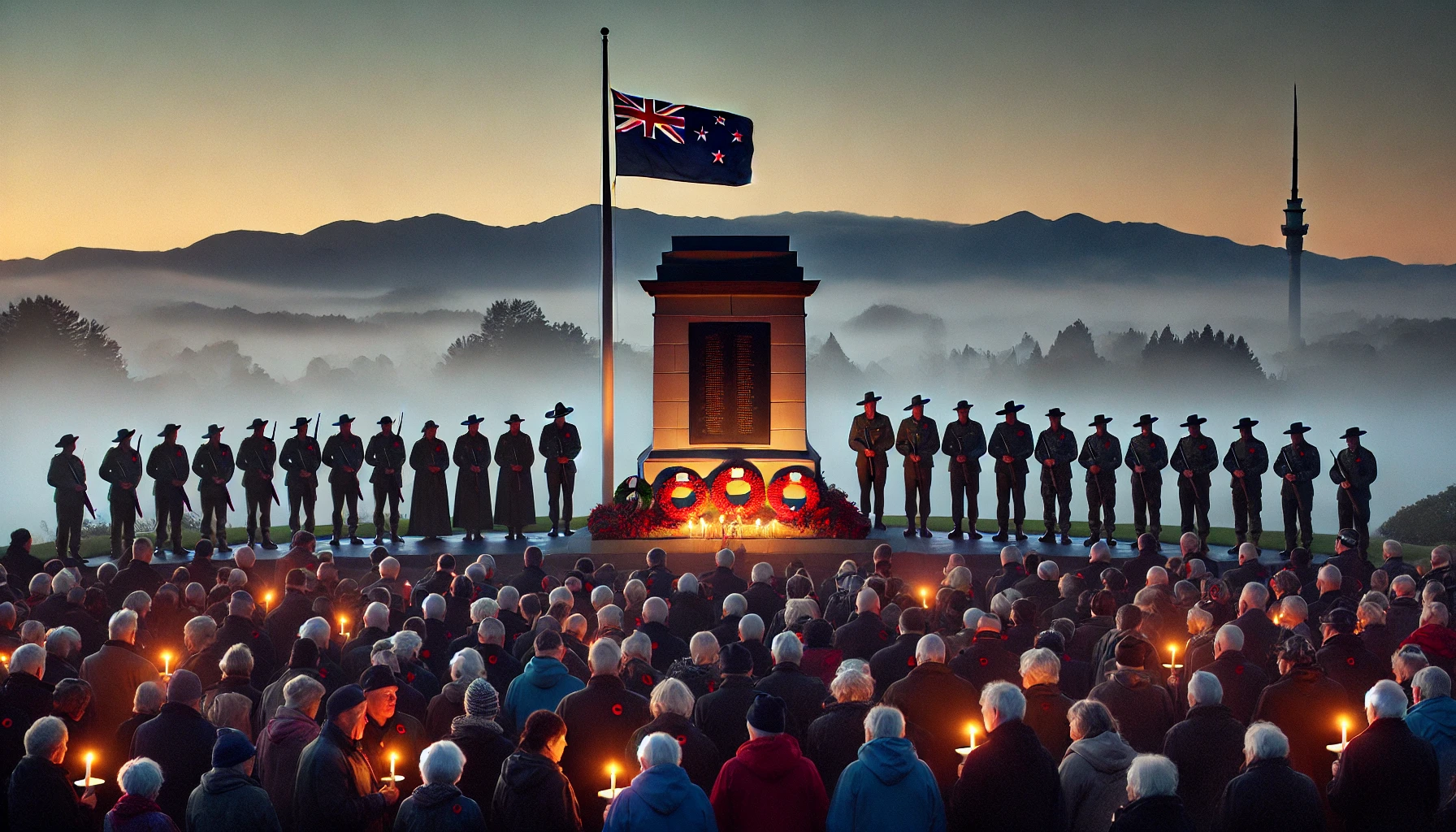
Anzac Day is one of New Zealand’s most significant national observances, with the Dawn Service being a deeply respected and solemn event that takes place on the 25th of April every year. This service, held in the quiet, early hours of the morning, is a time for New Zealanders to come together in remembrance of those who served and sacrificed their lives in conflicts, particularly during World War I. The Dawn Service is not just a commemoration; it is a reflection of national identity, resilience, and the enduring spirit of camaraderie.
The History and Significance of Anzac Day in New Zealand
Anzac Day, first observed in 1916, marks the anniversary of the Gallipoli campaign, a tragic yet pivotal moment in New Zealand and Australia’s military history. The Gallipoli landings on April 25, 1915, saw thousands of young men from both countries endure extreme hardship and devastating losses. The event, while a military defeat, forged a sense of unity and national pride that continues to resonate in New Zealand’s cultural memory.
Over the years, Anzac Day has evolved to honor not just the fallen soldiers of Gallipoli, but all New Zealanders who served in conflicts around the world. The Dawn Service, in particular, has become a symbol of this broader remembrance. Held at dawn, the time of the original Gallipoli landings, the service connects attendees with the past, reminding them of the sacrifices made in the name of freedom and peace.
The Dawn Service’s significance is deeply ingrained in New Zealand’s national consciousness. It is a time when the country collectively pauses, not just to remember the past, but to reflect on the values that continue to shape its identity. The simplicity and solemnity of the service enhance its emotional impact, making it a powerful expression of national remembrance.
The Structure of the Dawn Service
The Dawn Service follows a structured and traditional format, beginning in the pre-dawn darkness and continuing as the first light of day breaks. The service typically includes a series of formal elements designed to honor the fallen and remind participants of the gravity of war.
The service usually begins with a silent gathering, where attendees, including veterans, military personnel, and civilians, come together in a shared space of remembrance. The silence is often broken by the playing of the “Last Post,” a bugle call that symbolizes the end of the day’s work and, in this context, represents the final farewell to the fallen. This is followed by a minute of silence, allowing attendees to reflect on the sacrifices made by those who served.
After the silence, the “Ode of Remembrance” is recited, often by a prominent figure in the community or a military official. This ode, which includes the famous lines “They shall grow not old, as we that are left grow old,” serves as a poignant reminder of the enduring impact of war on those who survive and the generations that follow.
The service usually concludes with the playing of the national anthem and a closing prayer or benediction. As dawn breaks and the service ends, many attendees place wreaths or poppies at the base of the cenotaph or memorial, a tradition that symbolizes the respect and honor owed to those who have served.
The Emotional Impact of the Dawn Service
The emotional resonance of the Dawn Service is profound, both for those who have a direct connection to the military and for the broader community. The timing of the service, held in the early hours before the sun rises, contributes to its reflective and solemn nature. The darkness and quiet that accompany the service create a powerful atmosphere of contemplation and remembrance.
For many attendees, the service is a deeply personal experience. Veterans often attend to honor their comrades, some of whom did not return home. For the families of those who served, the service provides a moment of connection to their loved ones and a way to honor their memory. Even for those without direct military ties, the service represents a time to acknowledge the sacrifices made by others for the greater good.
The communal aspect of the service also plays a significant role in its emotional impact. Standing shoulder to shoulder with fellow New Zealanders, united in remembrance, fosters a sense of shared identity and national pride. The act of coming together in the pre-dawn hours, often in cold and challenging weather, underscores the collective commitment to honoring the past.
The simplicity of the service, with its focus on reflection and remembrance, allows for a deep emotional engagement. The absence of overt displays of patriotism or celebration ensures that the focus remains on the solemnity of the occasion and the individuals being honored. This understated approach enhances the emotional depth of the service, making it a truly moving experience for those who attend.
The Modern Relevance of the Anzac Day Dawn Service
In contemporary New Zealand, the Anzac Day Dawn Service continues to hold significant relevance, both as a historical commemoration and as a reflection of modern values. While the service originally centered on the experiences of World War I, it has expanded to include recognition of all conflicts in which New Zealanders have served, from World War II to more recent peacekeeping missions.
This broader focus reflects New Zealand’s ongoing commitment to peace and international cooperation. The service serves as a reminder of the cost of war and the importance of striving for peaceful resolutions to global conflicts. It also underscores the sacrifices made by those who serve in the armed forces, both in the past and present, highlighting the continued relevance of military service in maintaining national and global security.
The Dawn Service also resonates with younger generations, who may not have a direct connection to the wars of the past but who recognize the importance of remembering history. Many schools and youth organizations participate in the service, ensuring that the legacy of Anzac Day is passed down to future generations. This participation by young people adds a sense of continuity to the observance, bridging the gap between past and present.
Furthermore, the service has taken on new significance in light of recent global events. In a world where conflict and division are increasingly prevalent, the Anzac Day Dawn Service serves as a poignant reminder of the need for unity, resilience, and compassion. It is a time to reflect on the values that bind New Zealanders together, regardless of their differences, and to reaffirm a commitment to peace and understanding.
In conclusion, the Anzac Day Dawn Service in New Zealand is a powerful and enduring tradition that continues to resonate deeply within the national consciousness. It is a time for reflection, remembrance, and recommitment to the values that define New Zealand as a nation. As the sun rises on April 25th each year, New Zealanders of all ages and backgrounds come together to honor the past, acknowledge the present, and look forward to a future grounded in peace and unity.








